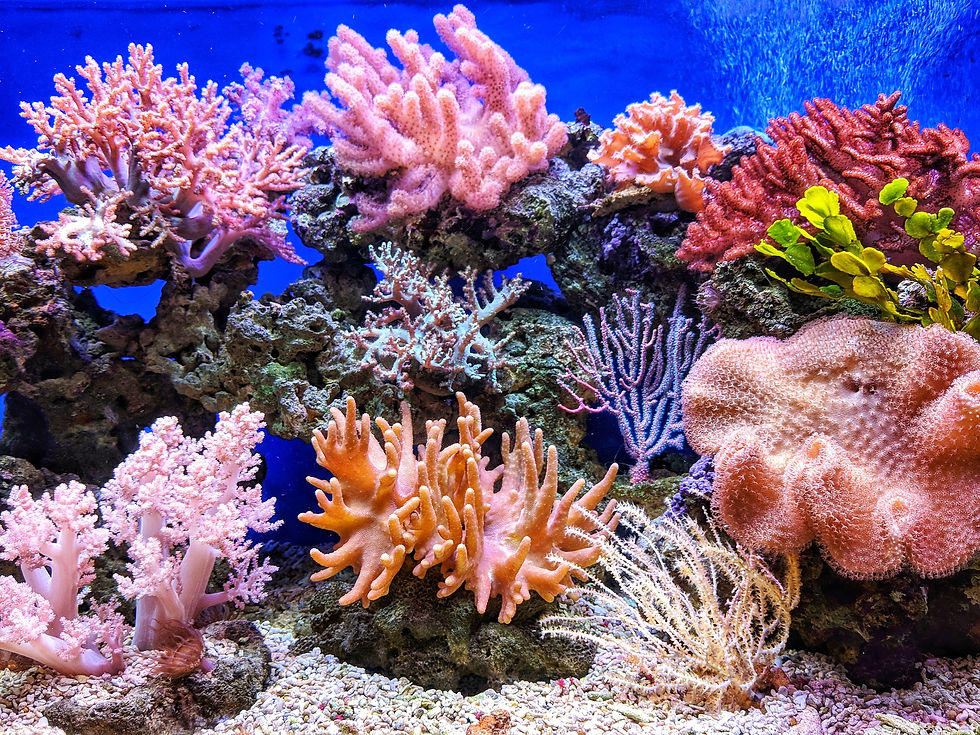How To Respond To the Microfibre Invasion
- Liam Mclaughlan

- Jun 22, 2021
- 3 min read
Updated: Aug 16, 2021
What if I told you that particles no bigger than 5mm in length being dumped into the ocean are accelerating our planet to a certain doom? These bite-sized pollutants, known as microplastics, are absolutely devastating our oceans.
The toxic chemicals they release are endangering the millions of species of fish that are consuming them every single day. Their slow biodegradation, and having no way of extracting these microplastics, means that they will remain in our oceans for a long time.
And what is the prime contributor to all of this? The very clothes you have on your back right now.
Our fashion industry relies heavily on the use of microfibres, such as polyester and nylon, when creating our clothes. Yet these are responsible for one third of the microplastics pollution in the ocean.
With half a million tons of microfibres being dumped into our oceans yearly, they are rapidly invading our ecosystem and toxifying everything that we hold near and dear.
So, what’s the big deal?
The more microplastics that are dumped into the ocean means that there are more fish that are polluted with plastic. This causes respiratory and digestive problems, compromising their immune systems.
This then increases the chance of disease-causing pathogens spreading amongst fish in the ocean, destroying mass populations. By 2050, 22 million tons of microfibres will be in our ocean, if the current rates remain the same. This only increases the chances of a mass wipe-out of fish, decimating food chains and food sources.
It is not just our oceans and favourite fish slowly being poisoned, we are too. Plankton are known consumers of microplastics, often mistaking them for food. When fish consume the plankton, they consume the microplastic also, where it slowly works its way up the food chain and, ultimately, leads to us.
Our consumption of fish puts us at significant risk of ingesting microplastics. We are currently consuming 50,000 particles of microplastic every year, which could have untold effects on our long term health.
While we are unclear on what long-term exposure to microplastics will do to your health over a period of time, it has been linked to cancer, infertility, and endometriosis.
Do not worry, hope is here
If you have read this and are now thinking: “God, What am I gonna do?!”, all is not lost. While the sheer amount of microplastics seems daunting, there are many things you can do to help reduce how much we pollute.
Fast fashion, while cheap and easy, is the biggest contributor to the pollution of microfibres. Avoiding fast fashion outlets is the best way to reduce microfibre pollution. There are many fashion brands that provide quality and sustainably sourced clothing that do the impossible: keep you looking great and save the planet at the same time.
Fairharbor and The Girlfriend Collective are two great examples of this type of clothing, but my personal favourite is Rapanui. They ensure plastic-free clothing and packaging, and provide competitive prices.
Shopping sustainably can be very expensive, however, if you can afford it, it is worth it. For the cash-strapped students out there though, thrifting is a great alternative. Take a visit to your local charity shop and you will be surprised by how many hidden gems you can find. Depop and Vinted are also great for this.
Looking after your clothes sustainably
Once you’ve got your new clothes, looking after them well will reduce microfibre pollution. You will lose microfibre most often in the washing machine, where they will be drained with the wastewater. This will find its way at sea, polluting it further.
To reduce this, use your washing machine less and hand wash with less water. Not only will this save the environment, but will keep your clothes fresher and softer. Clothes are often over-washed, so don’t be part of the crowd.
When you damage your clothes, resist the urge to throw them away and buy a replacement. First, see if you can fix the problem. Usually a sewing kit will do for tiny rips and tears, but there are many life-hacks that work for different problems (check out this life-hack article on how to easily fix your clothes). While the pandemic is still on-going, little skills like these are easier to learn.
While microplastics do run amok in our oceans, threatening our delicate ecosystem, we are not without hope.
Many of the things that contribute to our pollution problem can be easily addressed if we choose to vote with our wallets and speak our minds. We will maintain this planet’s beauty and health, one way or another.



Comments